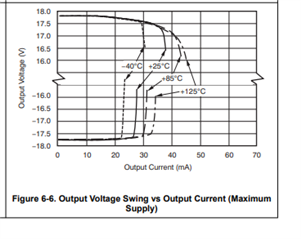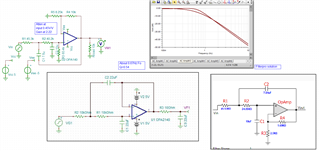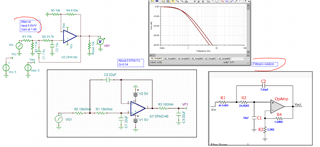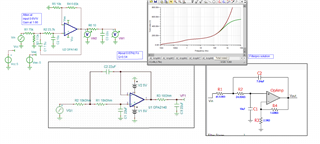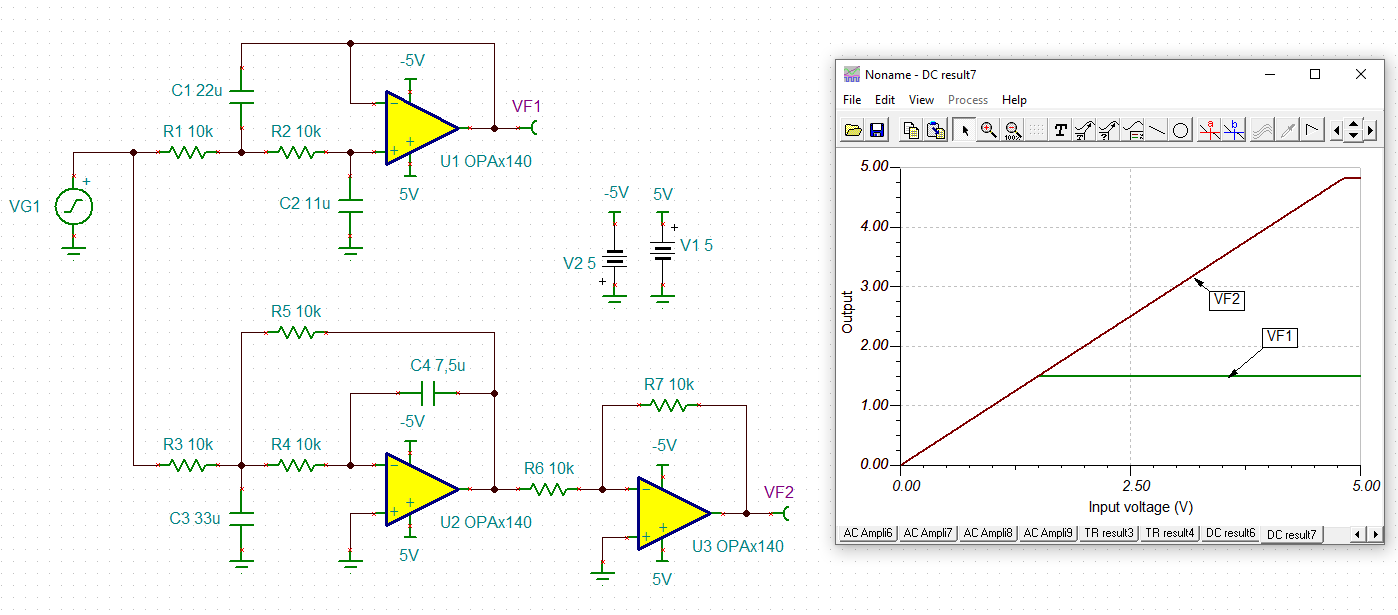Other Parts Discussed in Thread: OPA140
Hi,
I'm designing a Sallen-Key filter and need to know the DC transfer function of the filter.
The OPA4140 touts Rail-to-rail output, so I don't understand why my DC sweep from 0-5V doesn't result in an output sweep of 0-5V.
If I bump the power supply rails to +/-8V, it works just the way I expected. I don't understand why a rail-to-rail output amp won't go rail-to-rail.
Thanks in advance.
Blake


